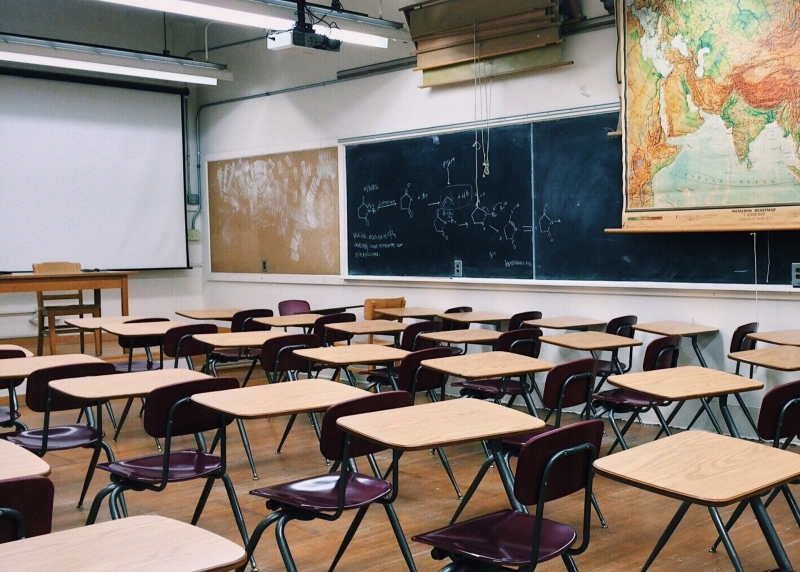The novel coronavirus has focused public attention on the indoor environment as never before. Even though most people in the United States spent the large majority of their time indoors before the pandemic, COVID-19 has increased awareness of the connection between indoor air quality and health. In addition to cleaning and disinfecting, technical topics such as building ventilation and filtration are now the subject of articles in popular media, not to mention conversations around the (virtual) water cooler and the school listserv.
The importance of ventilation is not a new concept, but it has taken on new urgency. Last summer, over 200 scientists from around the world published an appeal “to the medical community and to the relevant national and international bodies to recognize the potential for airborne spread” of COVID-19. As the California Department of Health recently summed it up: “Growing evidence suggests that viral transmission can increase in crowded, poorly ventilated indoor spaces, through small aerosols that can remain airborne.” The National Academies of Science held a two-day workshop on the subject in August, and the CDC recently added information to its web pages acknowledging that “COVID-19 can sometimes be spread by airborne transmission.”
Ventilation and filtration are now widely recognized as important elements in addressing airborne transmission and reducing the risk of infection indoors, along with social distancing and face coverings. General recommendations include bringing in more outdoor air and using higher-efficiency filtration, though how these general practices are applied in a particular building depends on a variety of site-specific factors.
 Schools present a special challenge in implementing best practices for ventilation and filtration. Underinvestment in school facilities is a long-standing problem throughout the United States, especially in lower-income communities. The American Society of Civil Engineers has consistently given schools a grade of “D” in its infrastructure report card. A June 2020 Government Accountability Office report found that about one-half of school districts in the United States needed to update or replace multiple systems, such as heating, ventilation, and air conditioning (HVAC) or plumbing, and an estimated one-third of schools needed HVAC system updates.
Schools present a special challenge in implementing best practices for ventilation and filtration. Underinvestment in school facilities is a long-standing problem throughout the United States, especially in lower-income communities. The American Society of Civil Engineers has consistently given schools a grade of “D” in its infrastructure report card. A June 2020 Government Accountability Office report found that about one-half of school districts in the United States needed to update or replace multiple systems, such as heating, ventilation, and air conditioning (HVAC) or plumbing, and an estimated one-third of schools needed HVAC system updates.
Federal, state, and local governments have vital roles to play in ensuring that school facilities provide the ventilation and filtration needed to protect health and promote learning. Action is needed not only to raise facility standards, but also to make available the financial and technical assistance critical to ensuring that all schools provide healthy learning environments.
Some state legislatures have recently taken steps to provide funding for school ventilation in order to ensure safe reopening. In June, Vermont appropriated $6.5 million from the federal Coronavirus Relief Fund to provide grants to schools for upgrading ventilation and filtration. And a few weeks ago, California enacted legislation creating a School EnergyEfficiency Stimulus Program to provide utility-funded grants to schools for ventilation and filtration (along with replacement of old plumbing fixtures), with priority to underserved communities.
California has a history of combining energy efficiency and indoor air quality, and the new school HVAC program aims to continue this tradition “to protect the health, safety, and ability to learn for California’s school children and the health of California’s teachers” while “bolstering the economy as a whole.” The program will provide grants “to reopen schools with functional ventilation systems that are tested, adjusted, and, if necessary or cost-effective, repaired, upgraded, or replaced to increase efficiency and performance,” with a goal of achieving the state’s current ventilation standards.
Adequate ventilation and filtration in schools is important not only for infection control, but also for reducing exposure to pollutants such as particulate matter, which are generated both outdoors and within buildings. Well before the pandemic, Missoula, Montana, implemented a notable program for reducing exposure to wildfire smoke that included integrating high-efficiency filtration into school construction and retrofit projects. In January of this year, the state of Montana updated its school health rules to add specific provisions on ventilation and other indoor air quality issues. And in 2019, California became a model for the rest of the country in revising its building code to require high-efficiency filtration in all new buildings. (You can read more about California’s new requirements and other state policies in ELI’s 2020 report on reducing exposure to particulate matter in homes.)
The pandemic underscores the central importance of schools to local communities and to the nation. The intense focus on how to safely reopen schools has reinforced what public health and building science experts have known for years: the school building itself plays a vital role in achieving the goals of our education system. School facility upgrades are long overdue in many communities—especially those that suffer disproportionate environmental exposures and disinvestment. The time is now for prioritizing a sustainable approach to funding this critical infrastructure.
ELI’s Indoor Environments program provides information on state and local policies for reducing indoor exposures and creating healthier buildings. Visit www.eli.org/buildings.
